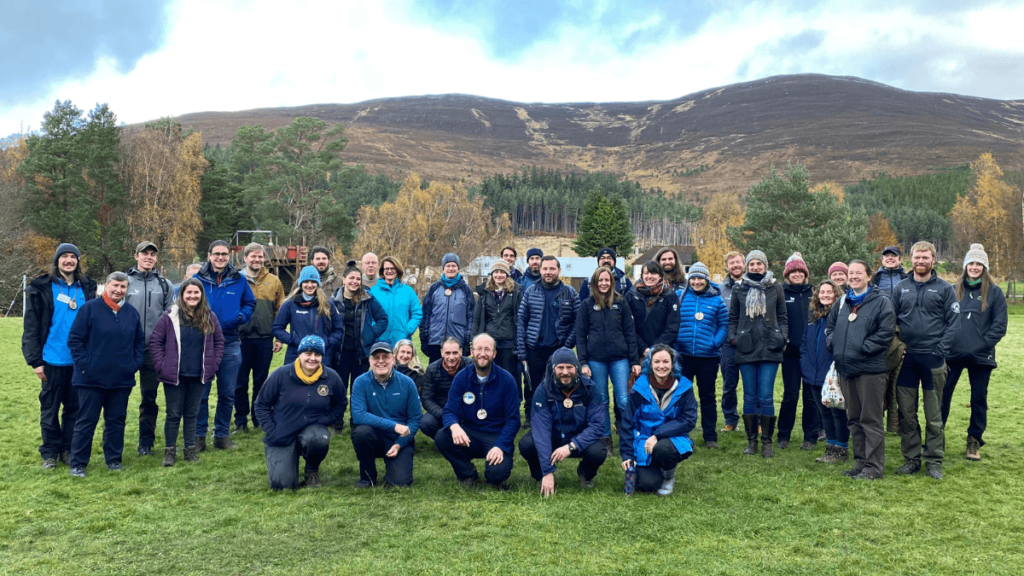Luke Taylor’s story exemplifies the development of rangers in Scotland in recent years: After starting as a ranger in 2016, he has had various seasonal contracts. As of this year, the volunteer International Representative for the Scottish Countryside Ranger Association (SCRA) has a two-year contract as a Ranger in Stirling that will hopefully lead to a permanent position – provided there is enough funding.
In our series on national ranger associations, we talked to Luke about the push by a government funding programme to ease the impact of the pandemic visitor rush on ranger work, and why only more stable funding and political commitment would help restore the ranger profession’s main objectives after years of job cuts: protecting precious habitats and thus doing groundwork against climate change.
What has been of most concern to rangers in Scotland recently?
Every two years we have the Ranger Rendezvous of the Scottish Countryside Ranger Association (SCRA). We were able to have this meeting last year, which was probably the most significant in the recent past for the profession in Scotland. In March 2021 we saw the launch of two strategic documents. The one was from the Ministry for Rural Affairs and the Natural Environment on the ranger profession and policy here in Scotland, which states the ranger standards in the ranger associations and other partners that rangers work alongside. It is called “Connecting people and places – a policy statement on rangering in Scotland”. The second was a new Visitor Management Strategy for Scotland from Scotland’s National Tourism Organisation which has ranger services at its core.
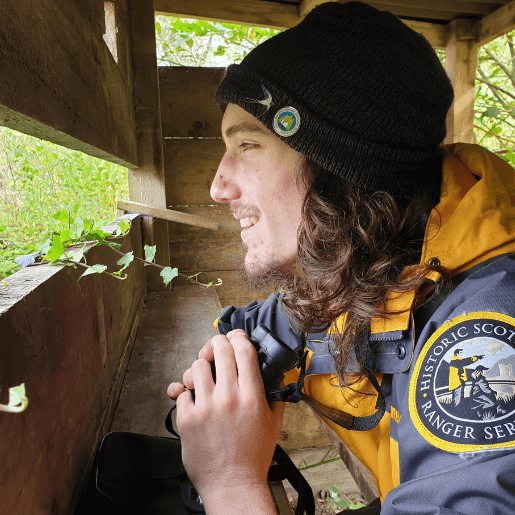
“After years of job losses and smaller ranger services, funding we have been working towards since 2017 has now come true.”
Luke Taylor, International Representative for the Scottish Countryside Ranger Association (SCRA) and Ranger in Stirling
These papers came out after years of job losses and smaller ranger services in combination with visitor management pressures caused by covid 19, when a significantly larger number of people visited outdoor green spaces. Years before, since 2017, we have had a petition to parliament to signify the importance of rangers and the need for more funding. It really raised awareness of the profession within politics in Scotland and may have led to the most important thing: This funding came true. It is a government fund called “The Better Places Green Recovery Fund” and is going towards conservation projects and staffing. It came about last year and was rolled out again this year, with a total of 1.5 million pounds for 48 countryside, coast and island projects across Scotland, enabling an additional 94 rangers and 15 visitor operations staff to be employed this summer across Scotland.
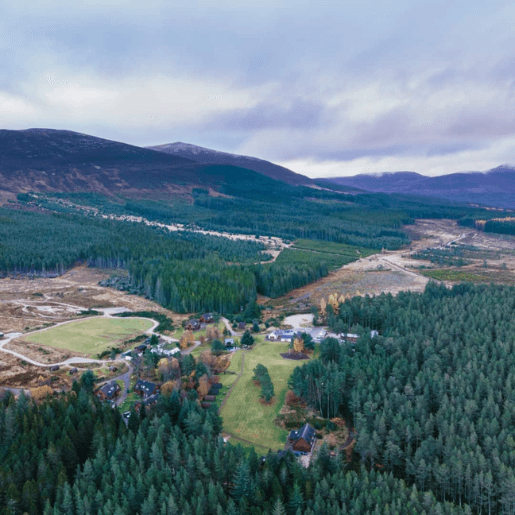
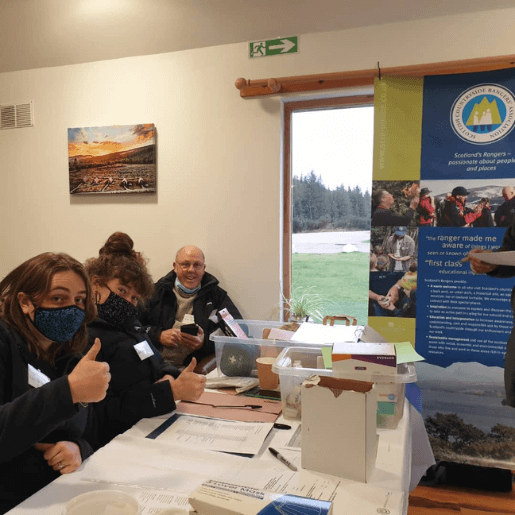
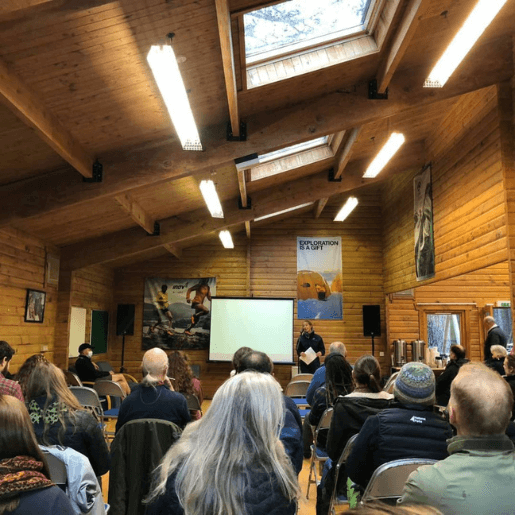
This kind of funding has not happened in Scotland for many years and was sort of a post-pandemic push of conservation and green infrastructure. That met our Ranger Rendezvous 2021 nicely, where we saw new people who got the opportunity to work over the summer through that funding. We met in November in the Scottish Highlands, at a four day program giving rangers the opportunity to reconnect and bring back the national network that hadn’t been in touch for the last years.
How have new rangers been incentivised?
Here in Scotland we don’t have a national ranger service. Rangers are employed by local authorities, state organizations or trusts – it’s a whole mix of employers with a non streamline funding and training. I myself was part of this funding last year as my neighbour local authority applied for eight seasonal rangers. My employer for example paid to send us to the Ranger Rendezvous organised by SCRA as a training opportunity. The theme of it, “Land Management – The Climate Emergency and Biodiversity Loss”, dominated our discussions, in addition we were offered workshops and site visits focused on a range of themes such as Forest Resilience, Carbon Footprint Reduction, Invasive Species, Wildfires, Visitor Management, Social Media, Youth Engagement, Peatland Restoration, Health and Wellbeing. Together with the exposure to the national ranger network, this event was a good thing to introduce the new rangers.
Which are the main tasks for rangers in Scotland?
For the last two years it has certainly been visitor pressure caused through the pandemic. The funding had some criterias to be met: With the additional staff pressure had to be relieved. So they had to be assigned tasks for this, mainly dealing with the challenges all of us faced recently: fires, wild camping, litter, erosion to the paths and beaches. All of that needed a lot of rangers to give positive education to visitors. Here in Scotland we have the Scottish Outdoor Access Code and the right to roam. This means you are free to roam as long as you do it responsibly. But this sometimes lacks when people don’t know what their responsibilities are. That’s where rangers came into tale last year and this year, reeducating visitors on their rights and responsibilities. As rangers we also of course do a lot of work to help the natural environment and to tie in to climate change emergency goals. To have these issues stronger woven into our education work, we had the Carbon Footprint Reduction workshop at our Rendezvous to see how rangers themselves can tackle their carbon footprint, also to be a better person to promote climate protection to a wider public. A big takeaway from this discussion is the mode of transport: talking to people about how they got to the site in first place, where they parked the car and if there is an alternative way they could get there next time. But also questions like: How many vehicles are we ourselves as ranger service using? Can we reduce the amount by sharing or get to our sites on bike, if necessary an electric bike?
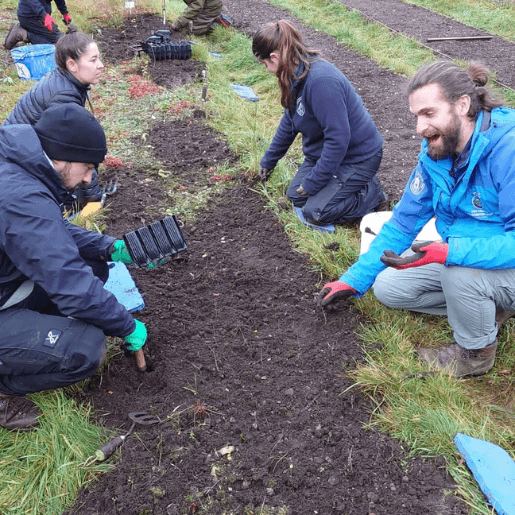
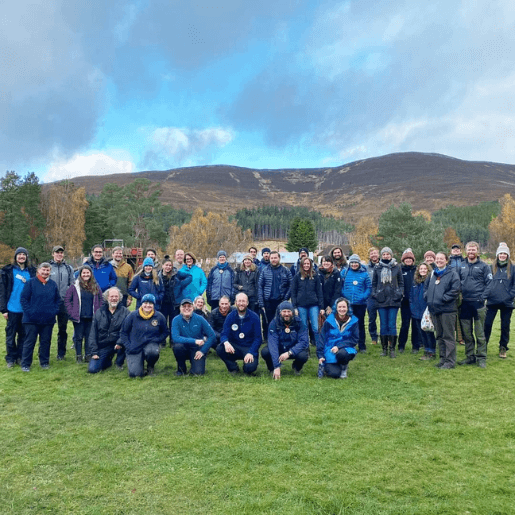
What issues are there that will engage Scotland’s rangers in the future?
The most recent topic was the discussion we had at the rendezvous about the pros and cons of a national ranger service compared to the current framework. The question of whether it could solve the main funding issues was one of the questions. The funding we received last year and this year is great, but we are not retaining any of those seasonal jobs yet. We would like to see more security and commitment from the government to fund more full-time staff. Because on the ground, many employers would like to hire more rangers but cannot due to lack of resources. SCRA’s telephone survey of Ranger Services on a national level in July 2021 identified 428 rangers working in 158 services. There are weaknesses and vulnerabilities in the model, particularly in the funding arrangements which had led to a marked decline in ranger numbers and the loss of 40 percent of the workforce between 2008 and 2018. Since this topic was never brought on the table at least in recent years, the aim of the debate was firstly to gather opinions on the matter. While Scotland does not have a National Ranger Service, it does have SCRA’s National Ranger Service badge. This is used by many Ranger Services across the country. It represents the collective work of Rangers across Scotland, and sets the professional standard. This badge is the only Ranger badge in the world to feature people at its core. Which is something our Rangers take great pride in the most.

This content is sponsored by

